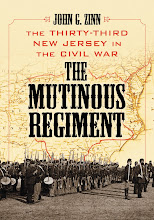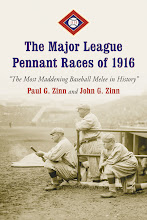
These days I am at some level a Mets fan because they are the National League team in New York - the spiritual descendants of my beloved Brooklyn Dodgers. Like the Dodgers, blue is one of their primary colors and now with the new Citi Field, the Jackie Robinson rotunda and other things reminiscent of the Dodgers, the connection is even stronger.
There is another level, however, which the connection to the Dodgers is just plain depressing - some of the things that have been happening on the field. The way the Mets have collapsed in the heat of the pennant race the last two years is all too similar to classic Dodger collapses of which the 1951 disaster (pictured above left) is probably the best/worst example. While no where near as important, the just awful way the Mets lost to the Yankees (it had to be the Yankees) on Friday night on Luis Castillo's error brought back too many painful memories of past Dodger debacles.
While I know many Brooklyn fans gave up on the Dodgers after their move to California, I remained a devoted Dodger fan for many years thereafter. It wasn't easy following a team 3000 miles away especially in the days before cable television, ESPN and other expanded sports programing. Even though they had moved so far away there were still some similarities in the on the field problems of the Dodgers. While not as well known as the 1951 calamity, 1962 was not a lot a different. I wasn't a baseball fan in 1951 (finally something I was too young to remember), but I remember 1962 all too well which was eerily similar to Branca/Thompson debacle. The Dodgers blew a seemingly safe lead the last week of the season, led the third playoff game 4-2 going to the bottom of the ninth only to lose when among other things, Stan Williams walked in the eventual winning run.
As noted 1962 isn't as well remembered as 1951 and, I think, one of the reasons for that is because in 1963 the Dodgers exorcised that demon as well all of the demons from prior horror stories forever. Once again in 1963, the Dodgers led the pennant race into September, this time beat off a challenge from the Giants only to be threatened by a Cardinal team that won 19 straight games going into late September. Even though the Dodgers had won 12 of their last 19 their lead was down to a single game before a three game series in St. Louis. As in prior years the newspapers and fans were talking about how the Dodgers would choke and lose the pennant at the very end of the race. But this time, the Dodgers swept the Cardinals and won the pennant by six games.
That was important, but by itself was not enough to exorcise the demons of the 1962 and beyond. Waiting in the World Series were the hated and feared New York Yankees, winners of the last two series. As today, there were more Yankee fans than Dodger fans including one particular obnoxious Yankee fan at Wayne High School, who regularly belittled the Dodgers and their star pitcher Sandy Koufax. While we Dodger fans believed in Koufax, he, and these Dodgers, had never faced the Yankees in the World Series. Any doubts we may have had ended quickly when Koufax set a new World Series record striking out 15 Yankees in the first game of the Series at Yankee Stadium. The next day at school, the obnoxious Yankee fan opened his locker to find a full length picture of Sandy Koufax staring him in the face.
It got even better after that as the Dodgers went on to sweep the Yankees in four straight games including another Koufax gem in the last game. It wasn't the Dodgers first World Championship, but because of the way it happened, it had more far reaching effects than the first two. The Sporting News described it best with the comment that the Dodgers had banished the choke up label forever. And that is true, 1963 is a dividing line in the history of the Dodgers, today no one thinks of the Dodgers of a team that always falls short, that breaks down or collapses under pressure. That's not to say that there haven't been bumps along the way. I have this vague recollection of the Dodgers being upset in a World Series a few years later by some obscure team who's name I forget. Anyway the Mets took care of that bunch a few years later in another World Series, but I digress.
Although the last thing I should be thinking about at this point is another book, I think there is a real story here. How the disaster of 1962 and all those prior disasters were ultimately redeemed in just one season - winning the 1963 pennant race and sweeping the Yankees in the Series. The Mets are in a similar situation today, they need to exorcise the demons of the past two plus years. The bad news is that they have to do it themselves, no one can do it for them. However, that is also the good news - they can do it by themselves!








